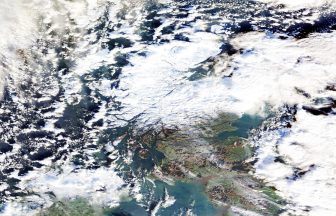Warnings have been issued ahead of what is expected to be the hottest day of the year for parts of the UK.
Temperatures are on the rise for much of the UK with southern areas set to see heatwave conditions.
Wednesday and Thursday could see peaks of 32C likely across the south and southeast with signal for a thundery breakdown for some.
There is also potential for the highest temperatures of the year so far – 32.2C on June 10 – could be exceeded.
Insight Jo Farrow Meteorologist
Scots could be treated to a bonus late summer heatwave after record breaking temperatures at the weekend.
The definition of a heatwave in Scotland requires three consecutive days where temperatures are 25C or above.
Although it is unlikely the overall Scottish September record of 32.2C in 1906 will be broken – highs of 27C are possible.
Central Scotland or Glasgow might meet the heatwave criteria.
The north and west of Scotland may not see temperatures at such a high level with the possibility of showery rain at times.
Coasts in the North East may also see some low cloud.
The UK Health Security Agency (UKHSA) and the Met Office have issued an amber heat-health alert (HHA) in eight regions of England.
The warnings include tips to help to protect the vulnerable people including older people, those with underlying conditions and those who live alone; they may need support to keep cool and hydrated.
The regions included in the amber alert are:
- London
- South East
- South West
- North West
- East Midlands
- West Midlands
- East of England
- Yorkshire and the Humber
Met Office chief meteorologist Neil Armstrong said: “High pressure is situated to the southeast of the UK, which is bringing more settled conditions and temperatures well above average for the time of year.
“While the highest temperatures are expected in the south, heatwave conditions are likely across much of England and Wales especially, with parts of Scotland and Northern Ireland also likely to see some unseasonably high temperatures.
“An active tropical cyclone season in the North Atlantic has helped to amplify the pattern across the North Atlantic, pushing the jet stream well to the north of the UK, allowing some very warm air to be drawn north.
“It’s a marked contrast to the much of meteorological summer, when the UK was on the northern side of the jet stream with cooler air and more unsettled weather.”
Follow STV News on WhatsApp
Scan the QR code on your mobile device for all the latest news from around the country


 iStock
iStock


























